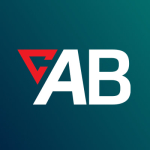I use AutoSys Workload Automation for enterprise batch scheduling, so for banking and retail values, I have multiple modules of applications. AutoSys Workload Automation is used to schedule and process jobs or automated triggers 24/7. The tool is for cross-functional and cross-application dependency management purposes.
To me, what's most valuable in AutoSys Workload Automation is its robustness and quickness. The tool can trigger jobs within a few milliseconds, and it can handle large volumes of jobs.
An area for improvement in AutoSys Workload Automation is that it lacks advanced features or advanced built-in functionalities found in competitors, for example, an advanced workflow feature. Even the handling or notification from AutoSys Workload Automation isn't the best in the industry. Other products have very good workflow-related functionalities such as ActiveBatch that's missing in AutoSys Workload Automation, so I wish the tool had those features.
I've been working with AutoSys Workload Automation for more than ten years now.
AutoSys Workload Automation is ninety-nine percent stable. In a year, it's rare for my team to see issues with it, and that's even mostly due to the infrastructure. As a product, AutoSys Workload Automation is very stable, and robustness is one of its strengths.
AutoSys Workload Automation is a scalable product, and my company also has the facility to expand it with multiple instances.
We contacted the technical support team for AutoSys Workload Automation to request some enhancements. They went ahead and improved AutoSys Workload Automation based on our request. My rating for the support team is nine out of ten.
The initial setup for AutoSys Workload Automation is very straightforward. It's very simple, and my team didn't have much issues with setting up the tool. The deployment takes less than an hour if you have proper access, and with everything in place.
I don't have information on the exact licensing cost of AutoSys Workload Automation because that's managed by the tools and financing teams. For agents, it's close to $4,00, but for the server setup, it's usually a one-time license initially, and it's AMC which is paid every year and comes close to $8,000 to $10,000.
I'm a solution architect, so I implement and support AutoSys Workload Automation.
I'm working with the latest version of AutoSys Workload Automation which is R12.
My team didn't have any problems maintaining AutoSys Workload Automation. There's no issue as long as the server and infrastructure are kept in place and as long as the latest version of the product is running.
Most of the customers who still use AutoSys Workload Automation have been using it for a very long time, for example, ten or twenty years. Newer customers probably go for cheaper solutions such as Tidal because it has more capabilities, aside from being more affordable, versus AutoSys Workload Automation.
My advice to anyone looking into implementing AutoSys Workload Automation is that the decision should be based on the use case, what you're looking for, and your skill set. You should have a resource who has good knowledge of AutoSys Workload Automation because learning the tool also takes a bit of time. It all depends on the use case. For example, for banking or for a customer who has more file transfer requirements, AutoSys Workload Automation would be the best solution.
I would rate AutoSys Workload Automation as seven out of ten because new products do much better in the automation niche compared to AutoSys Workload Automation.

















